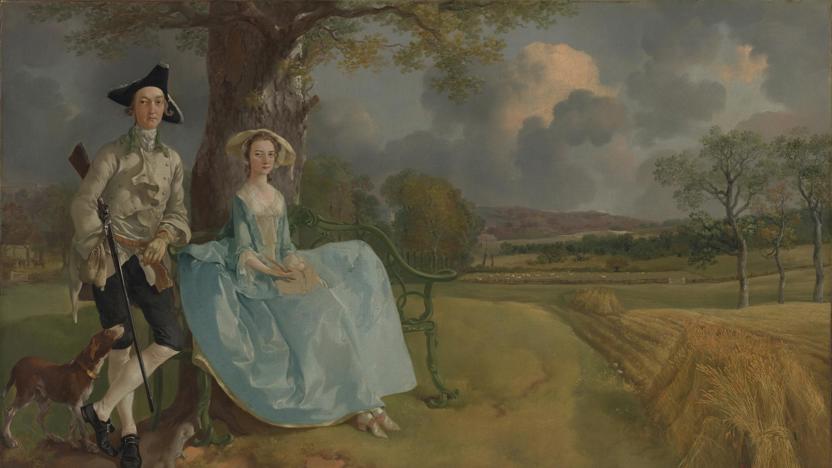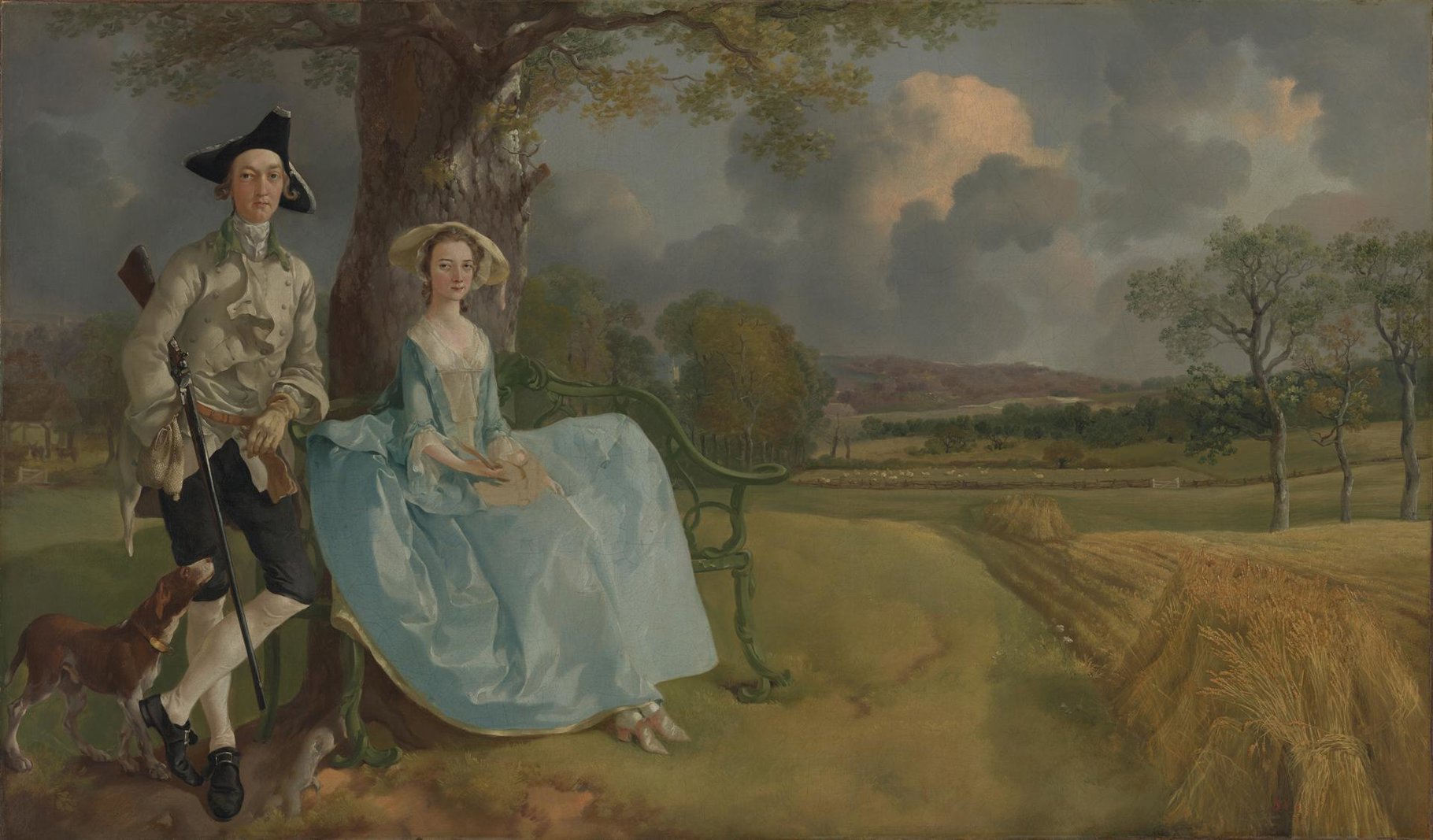Thomas Gainsborough's 'Mr and Mrs Andrews'
Audio description
This is a description of 'Mr and Mrs Andrews', by Thomas Gainsborough, painted in about 1750. It is oil on canvas, just under 70 cm high and 120 cm wide. The frame is ornately carved and gilded with gold leaf, with curling scrolls of leaves and shells.
The painting is set on a country estate in the southern English countryside, near Sudbury in Suffolk. Mr Robert Andrews and his wife Frances are the main focus, but the composition is unusual, as they are positioned on the far left. The rest of the painting to the right shows the surrounding landscape. It is a triple portrait: husband and wife, and their land. Behind the couple looms a majestic oak, which is still alive and well today.
Both figures are facing us. Mrs Andrews is dressed more for the drawing room than the countryside, in a pale, watery-blue, silk gown. The wide skirt covers most of the green bench she is sitting on, only the delicate curves of the back and legs visible. It is a dress to admire, with fine cream gauze draped around the shoulders, falling to a V shape at the front. More gauzy ruffles are at the cuffs of her three quarter-length sleeves, her forearms exposed, hands in her lap. She wears a floppy straw hat, over what could be a small cap, only the lacy edge showing. Peeping out from under the hem of her dress are pink and ivory pointed slippers, her feet crossed at the ankle.
Mrs Andrews regards us with a sideways look, the lips of her small mouth tightly clamped, giving her expression a flintiness. She was a teenager when this was painted, but her face shows none of the softness of youth.
Mr Andrews stands next to her on the left, his left elbow resting nonchalantly on the back of the bench, his other hand in his pocket, a long-barrelled shotgun clamped under his arm. His tricorn hat is perched on the back of his head. He wears a pale coloured shooting jacket with a sage green collar, dark brown breeches, white stockings and buckled shoes. Bags of powder and shot hang from his leather belt. He looks out with a direct, haughty look on his rather stolid face, above the pale silk cravat wrapped around his throat. Looking up faithfully, his brown and white gun dog stands at his feet on the left.
The sky shows changeable weather as blue-grey clouds billow up. Gainsborough depicts the landscape beneath, spread with fields and meadows, land that would have provided a healthy income for the sitters. In the near foreground to the right, a pile of newly harvested corn has been propped into an untidy pile. To the far left a wooded area in the middle ground opens up to distant fields painted in a soft reddish
grey. Gainsborough and Mr Andrews both attended Sudbury Grammar School and Gainsborough was born locally, so knew this area very well. Some important buildings feature in the painting, including, a square tower in the far distance, just perceptible between the trees in the centre of the composition. This is the tower of All Saints, where the couple were married. To the right of this are the pale yellow roofs of the of barns on the estate where Mrs Andrews grew up.
Gainsborough’s painting technique was rapid and confident; he was known for using very liquid paint which is quite thin in some areas. The feathery brushstrokes that he was to develop later in his career are mainly absent, although there is a hint of what was to come in the trees where the leaves are painted with tiny, wispy marks.
The scene is unfinished; there is a beige coloured unpainted area in the centre of Mrs Andrew’s lap. Her right-hand hold what could be a bird’s feather. Possibly, this space was left to add a child, when the time came.


